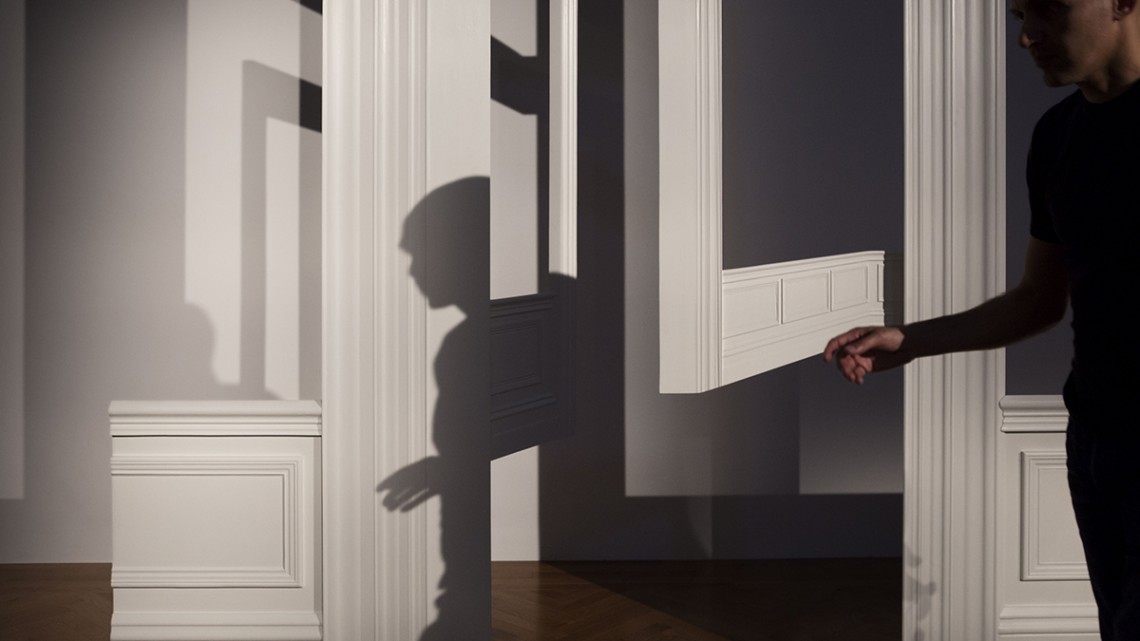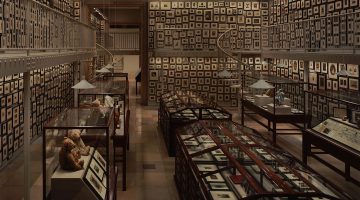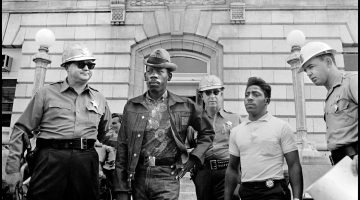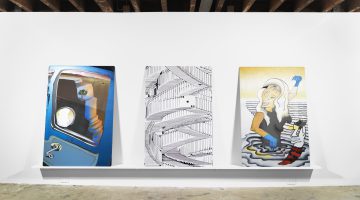Walid Raad
MoMA
11 West 53 St, New York, NY 10019
October 12, 2015 – January 31, 2016
A chunk of wall sits installed—standing as if ripped from somewhere else—in MoMA’s third floor atrium for Walid Raad’s exhibition. It’s a survey of the contemporary Lebanese artist and a maze of truths and half-truths, fictions and falsehoods. Signposts of trauma dot the way—of humans and weaponry—an archive of violence and anxieties both real and imagined. Raad makes artwork that pivots around the recent history of Lebanon, especially the Lebanese Civil War, a conflict that claimed 100,000 lives and displaced a million from 1975-90, and which still reverberates. The other primary concern of his work is the financial system of the art world, specifically the “Arab world” art world and the instrumentalization of art as big capital. From above, in terms of layout, it looks like a standard museum retrospective. Looking closer, the minimalism conceals forgeries of deeper contradictions.
Raad was born in 1967 in Chbanieh, a small village in a valley outside Beirut that prides itself on its orchards and intellectuals. He obtained his Ph.D. in Cultural and Visual Studies at the University of Rochester, and has shown work at Documenta, the Venice Biennale and the Whitney Biennial. An associate professor at Cooper Union, Raad has worked for the past 25 years as a researcher-cum-artist, creating works that blend real and fake. His work reveals the faults of documentation—how all images, data, and narratives are in some way fictitious, if only because they are momentary, piecemeal truths.
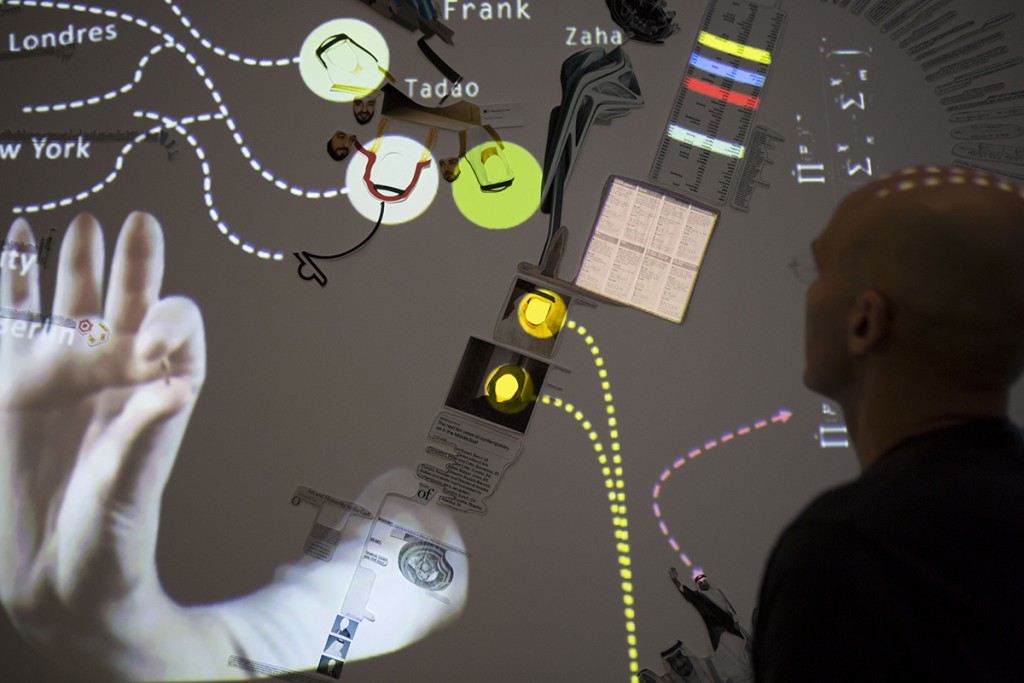
Walid Raad. Scratching on things I could disavow: Walkthrough. 2015. Part of Walid Raad, The Museum of Modern Art, October 12, 2015-January 31, 2016. © 2015 The Museum of Modern Art, New York. Photo: Julieta Cervantes.
Raad founded The Atlas Group in 1989, a made-up collective that researches Lebanon’s complex history (Raad is its only member), and produces historical documents that are a mix of legit and bogus. A former French colony, Lebanon has been caught in a matrix of violent political struggle between its Maronite Christians, Sunnis and Shias, complicated further by ideological coalitions, outside interference and occupation, and the massive influx of displaced Palestinians after the founding of Israel in 1948, and also the recent refugee crisis of the Syrian Civil War. Raad, through the Atlas Group’s works on display at the MoMA, critiques the reductionist approach that the West and Arab worlds take when presenting “objective” information—whereas oftentimes, history is the work of the winners, and journalism is ideology masquerading as reportage.
Rather than focusing strictly on factuality, Raad creates fictions that touch upon the emotional and psychological presences of war and its documentation. Secrets in the Open Sea (2002) is purported to be a series of photographs found in the rubble of a demolished commercial district—all shades of blue—which, after being sent to a lab for analysis, revealed images of individuals who had drowned in the Mediterranean.
Scratching on things I could disavow: Walkthrough (2015) is a series of works that analyze the emerging art world in Arab countries, a world which Raad ties to the machinations of colonialism and neoliberal financial policies. One work, a collection of intersecting doorway and wall moulding, suggests an architecture made unnavigable. Hanging on the opposite wall is a collection of prints, including (maybe) fake invitations to biennials and prints of beautiful Arabic script that, in a Western context, might make one feel Orientalist for admiring.
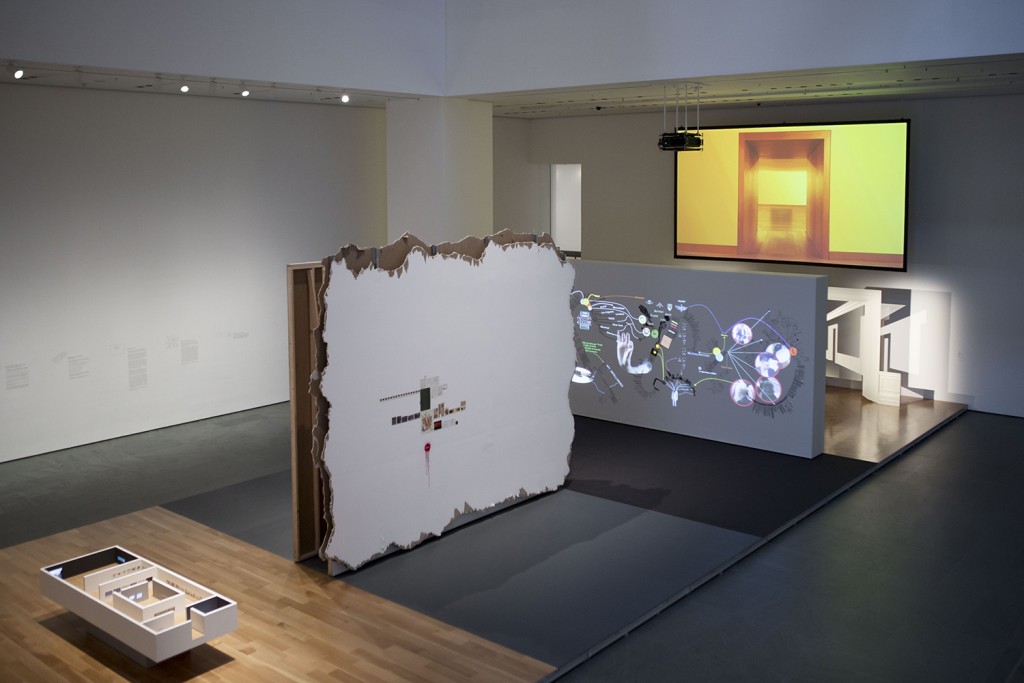
Walid Raad. Scratching on things I could disavow: Walkthrough. 2015. Part of Walid Raad, The Museum of Modern Art, October 12, 2015-January 31, 2016. © 2015 The Museum of Modern Art, New York. Photo: Julieta Cervantes.
Many of the works are accompanied by explanations, which may or may not illuminate truth. A projection purports to diagram the inner workings of the APT, or Artist Pension Trust, a group that purchases art from artists that it then sells. APT turns art into assets, creating a high-yield pension system that makes profit for itself and its artists. As printed on the wall text for Scratching on things…, Raad claims he was invited to join in 2007 as the group was developing a Middle East division, and he felt moved to research the methods and stakeholders of the art/finance institution. The projection on its own does little to illuminate APT’s function, but rather seems to aestheticize the graphic display of statistics and structure—replicating a key facet of finance.
The more poetic executions of Raad’s strategy include the presentation of fictional art-historical objects, once held by the Louvre’s Department of Islamic Art and sent to the Louvre Abu Dhabi. According to the wall text, when the crates were opened by conservators, the objects inside “were not the ones that had been sent out.” One of the benefits of so much fiction overlaid on reality is that it reminds us that the scrambling of what’s real and what’s not is unavoidable, particularly when thinking about the “Arab world.” One of the drawbacks of this approach is that it leaves the viewer not knowing much more about the subject at hand. History is sanitized when put into a museum, that is unavoidable, but this is part of Raad’s strategy of institutional critique; the lack of objective information highlights the absurdly literary truths of real life—the fact that oftentimes, if we look at what lays before us in history, what we find is something that feels just as unbelievable as fiction. And sometimes, fiction serves us better in the search for truth.
